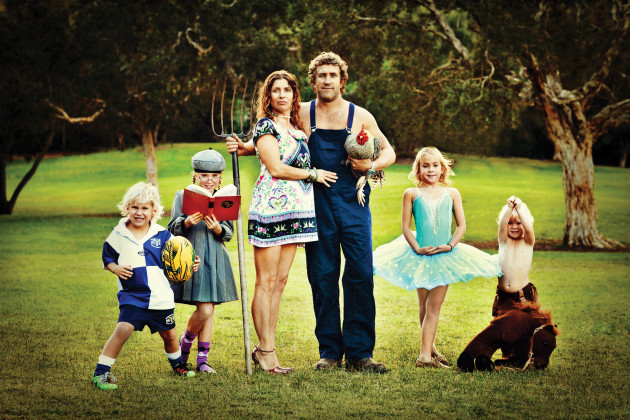Back in the days of film, the idea of handing over the film to the wedding couple or portrait sitters at the end of the job was unimaginable. Nikki McLennan speaks with wedding and portrait photographers to learn what strategies they rely on when dealing with clients who insist on getting all the digital files.

Why the reluctance?
These days, many clients, and especially Generation Y, use the availability of digital files as a key determining factor on which studio they decide to commission. High resolution digital files contain all the intellectual property of the image, and are akin to a film negative. Handing them over significantly decreases the likelihood of any future sales from the client. Graham Monro of GM Photographics explains that his company has a strict policy of never giving out high resolution digital files. This ensures that “we can maintain the quality and integrity of our work by not allowing the client to then print at low cost vendors and in doing so compromise the quality of the finished product.” The studio only offers a finished product that the client cannot produce themselves. “Our team produces the highest quality job which is then printed on archival paper and framed beautifully. We strongly believe that the photographer benefits from the client displaying the fine art on their wall, rather than on a CD in a drawer to print ‘later’. We believe that people, friends, relatives will see the beautiful wall art/album and this is how you stay in business. Our motto is not shoot and burn, but shoot and earn.”
Is there a compromise?
While some newer, less established photographers seem entirely comfortable handing over their digital negatives, amongst veteran shooters, it’s something that they’re dead against. One strategy used by some studios is to only allow the purchase of a retouched JPEG, not RAW file, with the purchase of a physical print, and only printable to around 8x12 inches. While some studios charge an additional fee for this, other studios will factor its inclusion into the price of the products on offer. Suzette Nesire, a Melbourne-based baby and child photography specialist with 15 year’s experience takes this approach. “We have to move with what the market wants, and that’s why I include digital files, but only at the proofing size of 3x5 inches, with each print purchased.” GM Photographics, on the other hand, only provides a watermarked file suitable for social media alone.
The reason many studios are reluctant to release high-res files is that it allows the integrity of the image to be preserved as the client has a quality product to show as a representation of the studio’s work, in the print that they’ve purchased. The issue with solely providing digital files is that should the client choose to have the image printed at somewhere like Harvey Norman, K-Mart, Officeworks or Big W, thinking that they are being savvy saving on costs, is that such establishments are simply not equipped to produce images of the same standard and quality as dedicated pro labs. And what typically tends to happen is that when clients are unsatisfied with the resulting print, it’s the studio that automatically gets blamed.
Another possible outcome is that the client entirely fails to even detect that the work has been poorly printed, while others viewing the print take note of the sub-standard result and enquire studio was responsible. The result is that the studio is unfairly blamed for the final product, which they have not had the opportunity to assess for quality and that it meets their exacting standards. Either way, it’s a lose-lose for the studio. “As a professional photographer, I print in-house. It is just unacceptable to have clients request digital files and then go to, say, Harvey Norman and receive green prints with my studio’s name on it,” Nesire says. “It’s their uneducated eye that makes it difficult for them to see the difference.”

Understanding what’s involved
Client education is crucial. The truth is that most clients have no idea what a RAW file is. Chances are that they have just heard that they are bigger and better, or someone told them to ask for files, and therefore they must possess them, even if they are unable to view or manipulate them.

Portrait studios need to explain to their clients that unlike wedding studios, that may provide a hundreds of high resolutions files along with a major album order, the practice of handing over multiple files only is not common practice. And this may leave clients confused and frustrated because, unfortunately, there are mixed messages in the marketplace with regards to dealing with digital files. As a professional photographer, it’s your responsibility to educate your prospective clients as to why you choose to not hand over all the files from a session, or any of the files, for that matter.
Chances are that you have already received multiple requests to either see, or retain copies, of all images that were captured. Clients need to understand that, as the artist and creator of the images, what you decide to show them is a matter of professional judgement. Photographers releasing all images from a shoot, the good with the bad, will find that it comes back to bite them.

Client retention strategies
The photographic landscape, for many years now, includes no shortage of “backyarders”, and many might not have defined business practices and processes in place. The term “shoot and burn” used to be viewed with much derision, but many wedding studios are taking this approach, but are providing “finished” files that have been processed with their look and feel, and sometimes even helping clients select a prolab, to ensure that the integrity of the work remains in tact. If you’re uncomfortable handing over any files, you need to need to establish confidence in your clients that they are commissioning you for your artistic talents, ability to edit, and show only the very best work. It’s also important to ensure you’re not discourteous or disdainful with clients that may be unfamiliar with certain photographic practices. Doing so, is the quickest and easiest way to not land the assignment.
One approach to take with prospective clients is to explain that a high resolution file, and especially a RAW file, is of no use to them whatsoever. Not only are they unlikely to be able to open and view the file on their computer, but even of they were, chances are they’d have no idea how to process it. Secondly, you might need to explain to clients that it’s typical to shoot maybe a dozen shots of the same scene to ensure the perfect expression or pose is captured, and further that when you edit, they may only be viewing a subset. US-based photographer Jeffery Guyer explains. “I have to get across the notion that they are hiring me not only to provide a product, the finished image, but a process as well. Without the process, there is no finished image,” he says. “Clients need to understand that part of that process means editing out the bad frames, and processing the rest in a way that only a professional photographer can. They need to know that ‘getting their money’s worth’ has nothing to do with the number of images shot, but everything to do the quality of the images delivered.”
Resolution?
As a professional photographer, it’s imperative that you protect the integrity of your work, and your studio’s reputation, but also that book sufficient clients to remain a going concern. Having a prepared, respectful and appropriate response to the request, or demand, for digital files is vital. Clients booking you for portrait services will need to appreciate that the approach taken by wedding photographers is different. You may also want to reinforce that your business is abut producing beautiful works of art that are to be enjoyed, hanging on a wall, not simply files that languish on a DVD or hard drive never to see the light of day. Aim to have your clients celebrate photography every day as a reminder of love and family – something that can only be done when proudly displayed on the wall. After all this is surely one of the best adverts for your studio. And should you decide to compromise a little, you may even provide low-res watermarked images, of prints your clients have purchased, that they can put all over social media.
Contacts
| Jeff Guyer | www.jeffguyerphotography.com |
| Graham Monro | www.gmphotographics.com.au |
| Suzette Nesire | www.suzette.com.au |





